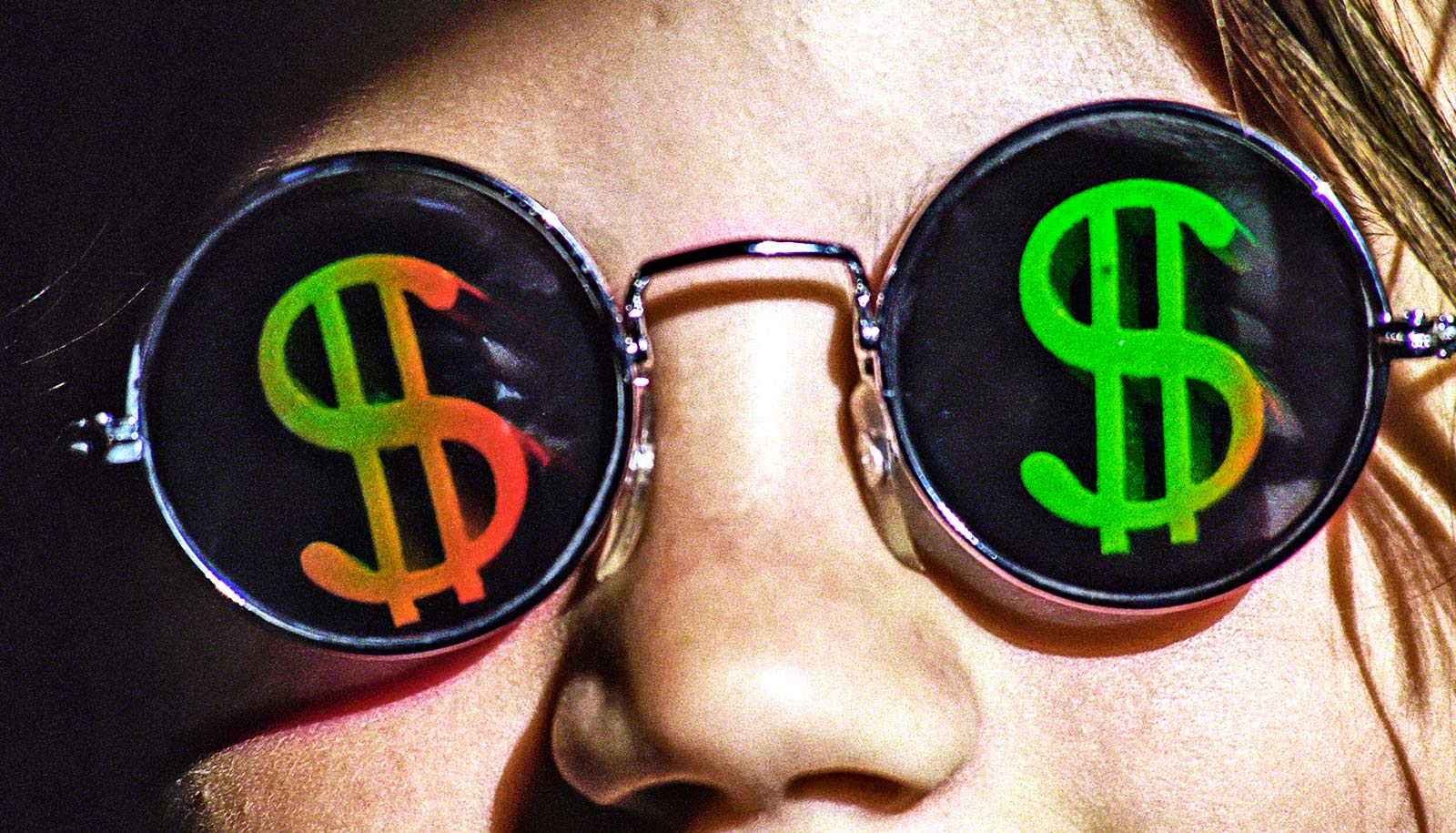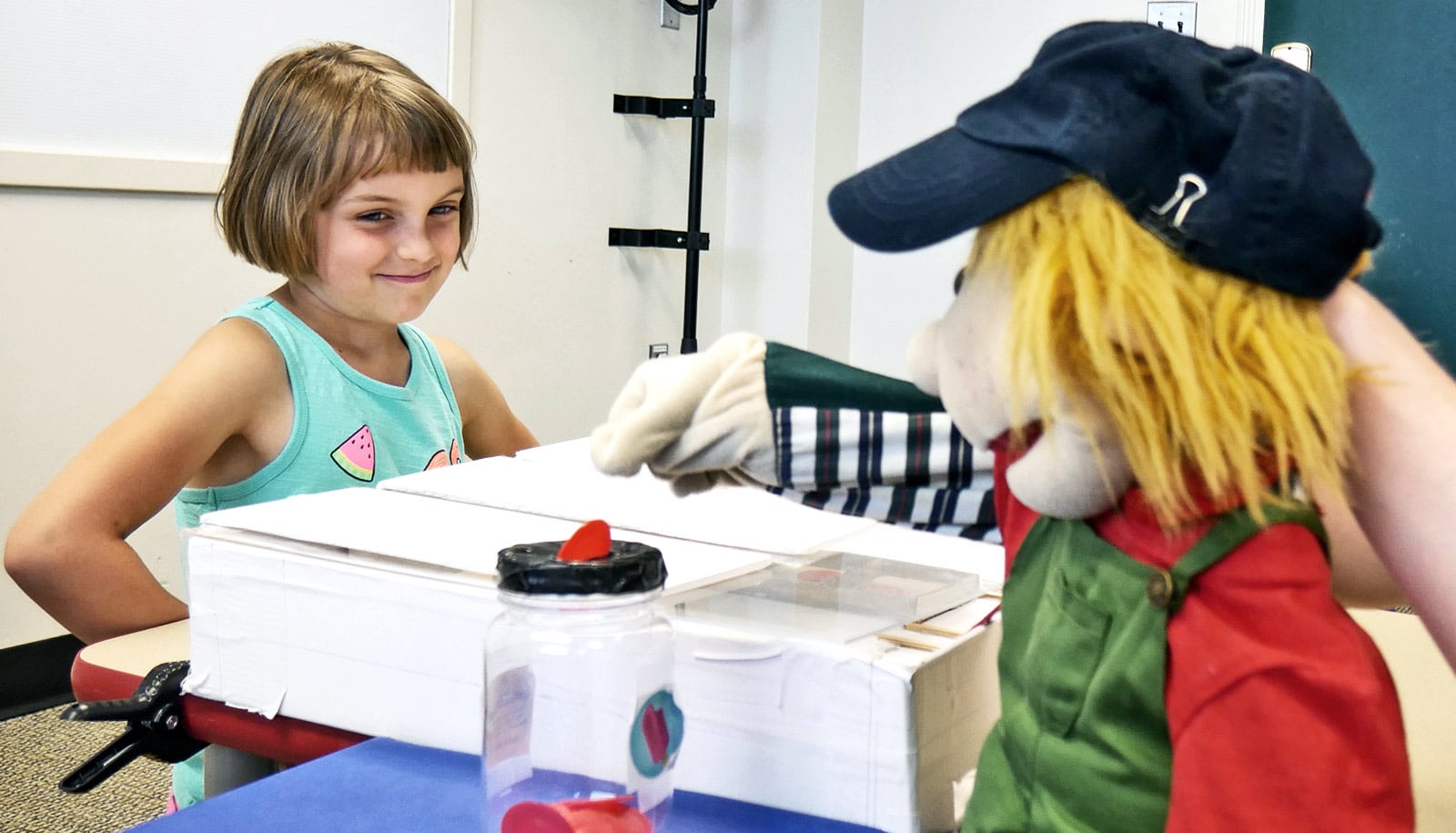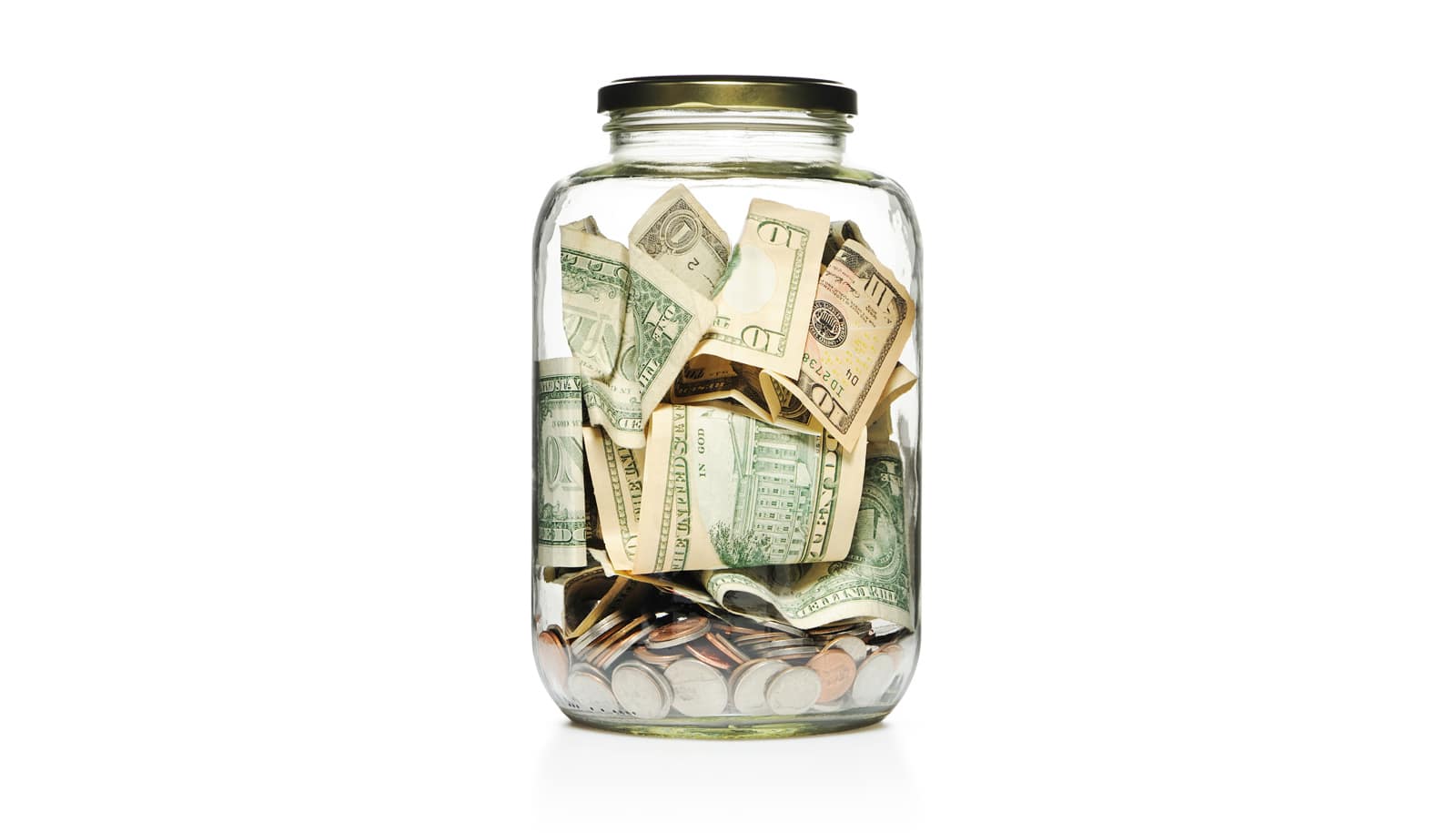Experiments show that children prefer non-stolen money from a “bad” person over stolen money from an “okay” person, researchers report.
When people deposit a $100 bill into their bank accounts, they don’t imagine that when they later withdraw $100 they will get the same bill. After all, the only thing that matters about money is its amount. A dollar is just like any other dollar—unless it comes with a tainted past.
“People tend to imbue objects with essences,” says Arber Tasimi, assistant professor of psychology at Emory University. “We can be put off by objects that we know have a ‘bad’ essence because of an immoral history, like a sweater worn by Hitler. And money doesn’t appear to be an exception.”
Tasimi’s latest work finds that children as young as five show an aversion to accepting “dirty” money.
The research, which Tasimi conducted with Susan Gelman, a psychologist at the University of Michigan, appears in the journal Cognitive Science.
“This sensitivity to morality, even in the context of money, seems to emerge early,” Tasimi says. “The fact that children are making these distinctions adds to the evidence showing just how much we care about where things come from, particularly when they come from bad sources.”
Tasimi heads the Morality and Development Lab at Emory. He’s particularly interested in moral conflict—how we wrestle with our desire for personal benefits versus our interest in the welfare of others.
In previous research, Tasimi found that even babies prefer to take a single graham cracker offered to them by a “nice” puppet rather than two graham crackers offered by a “mean” puppet. But when the mean puppet offers them eight crackers, most babies “sell out.”
For the current paper, Tasimi wanted to explore how a sense of morality tied to money develops in children. A series of experiments included participants in two age groups: 5-to-6-year-olds and 8-to-9-year-olds.
The children were presented with various hypothetical scenarios: A person offering them a dollar. A person offering them a stolen dollar that they had found. A “bad” person who stole a dollar but was offering them a dollar they did not steal. And a “bad” person offering them a dollar that they had stolen.
The results showed that the children significantly rejected “dirty” money. They much preferred non-stolen money offered by a “bad” person than stolen money offered by an “okay” person.
“What we find over and over is that the morality of the money plays a critical role in whether people decide to take it,” Tasimi says. “Why would we imbue money with ‘badness’? I think that’s the million-dollar question.”
In ongoing work, Tasimi is delving deeper into possible answers to the mystery. Does the source of the money matter because it could be tainted? Is it due to an aversion to profiting at the expense of others? Or is it because accepting the tainted money somehow endorses the immoral activity behind it?
“I’m also intrigued by individual differences,” Tasimi adds. “Some people do treat a dollar like any other dollar, while others don’t. Why are some people bothered by ‘dirty’ money and others are not?”
Source: Emory University



